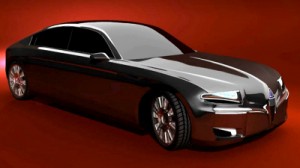we are of the ENVIRONMENT...for the ENVIRONMENT...about the ENVIRONMENT. We are GREEN!!!
Thursday, 18 April 2013
Electric car battery breakthrough
The Chinese vehicle manufacturer Silex Power has a concept electric vehicle (EV) that charges in 10 minutes and has a range of 1000km.
They plan to build a limited edition of 150 Chreos EVs by 2015. By the way, it only takes 3 seconds to accelerate from a standing start to 100 km/h.
Most auto reviewers scoff at the claims, but there are good reasons to believe that the traditional electrochemical battery, however far it has been developed, is close to being overtaken by solid state ultracapicitors, also known as supercapacitors.
EEStor, a Texas start-up company has patented a device called the Electric Energy Storage Unit (EESU) that could store more energy than the lithium-ion batteries used in portable devices and for less than the low-cost lead-acid batteries used in most cars. However, they have missed several self-imposed milestones in their development over recent years.
Kleiner Perkins Caufield & Byers, who also provided initial finance for Google and Amazon.com, continue to support the EEStor effort after 12 years and a team of bloggers still checks their car-park for car numbers when rumours abound about forthcoming announcements.
The Canadian EV manufacturer ZENN (Zero Emissions, No Noise) has ceased production of its vehicles to gain rights to distribute the EESUs. Their chairman recently said: “These tests represent the most important publicly announced milestone achieved by EEStor to date and we are very pleased to see the progress. For the first time formal testing of the EESU layers has been conducted by an independent testing company and the results are very encouraging.”
Ian Clifford, Founder and Vice Chair of ZENN added, “We are very excited about the next steps including EEStor’s plan to make layers available to qualified commercial buyers for independent testing purposes.”
In a separate development, researchers from The University of California, have used graphene to produce an inexpensive ultracapacitor. Graphene is a form of carbon, like diamonds or graphite, but its lattice crystal structure is only one atom thick. You could pile a million of these sheets on top of each other and you would still only have a stack one millimetre high.
Research into graphene ultracapicitors has been hectic in this decade because of their ability to both charge and discharge much faster than conventional batteries and, since there is no chemical reaction involved, they remain stable over thousands of cycles. That in turn means that their useful life will be a multiple of most appliances, such as a motor vehicle. Now we have something that can power an EV over longer distances and be recharged in minutes at a service station or your garage.
What remains, or at least did remain until the UCLA newsletter, was whether ultracapacitors could be developed with the energy density and at a price competitive with today’s best batteries. Energy density determines how much energy can be stored per kilogram or litre, depending upon whether the application is weight or volume critical.
For EVs, it’s weight that counts and the UCLA device is pretty much on a par with the best lithium-ion competitors. Storage should improve with development. Where volume matters, the device wins out over other types. The end-user price should be low as the device matures – it is so simple to make.
So now we have a prototype device that, if the remaining hurdles are overcome, displays the properties we need for a range of uses, all of which exhibit fast charging and long life. Your cell-phone will not go flat quickly and can be recharged in seconds. Your EV battery can be made of carbon and so it will not burn. Ultracapacitors can be scaled up for use in storing solar and wind energy for when they are needed. All of this without any pollution or GHG emissions.
Could it be that the Chreos has an ultracapacitor storage device? After all, the number of patents pending or granted is led by China (2204), followed by USA (1754), South Korea (1160) and UK (54).
Subscribe to:
Post Comments (Atom)

No comments:
Post a Comment